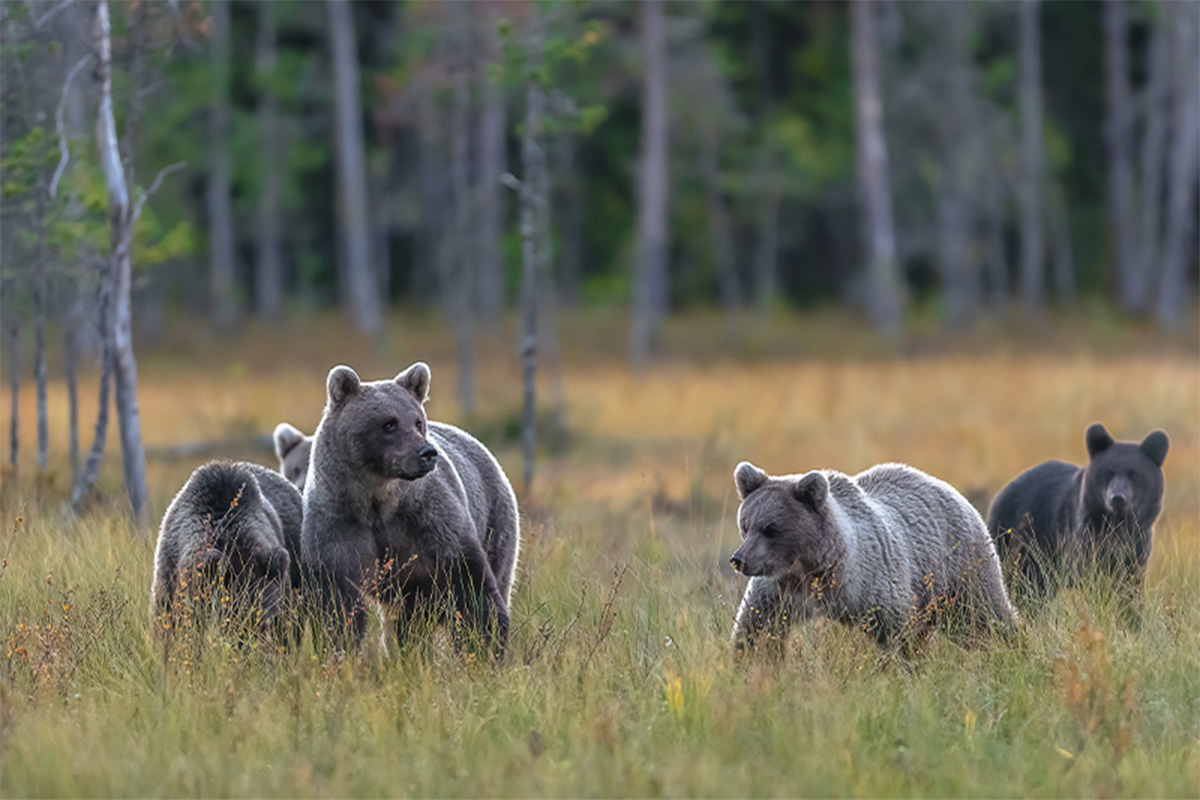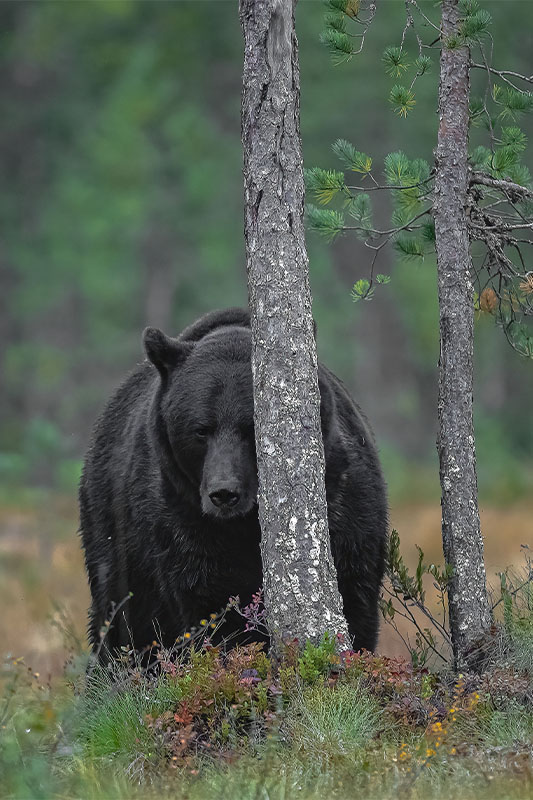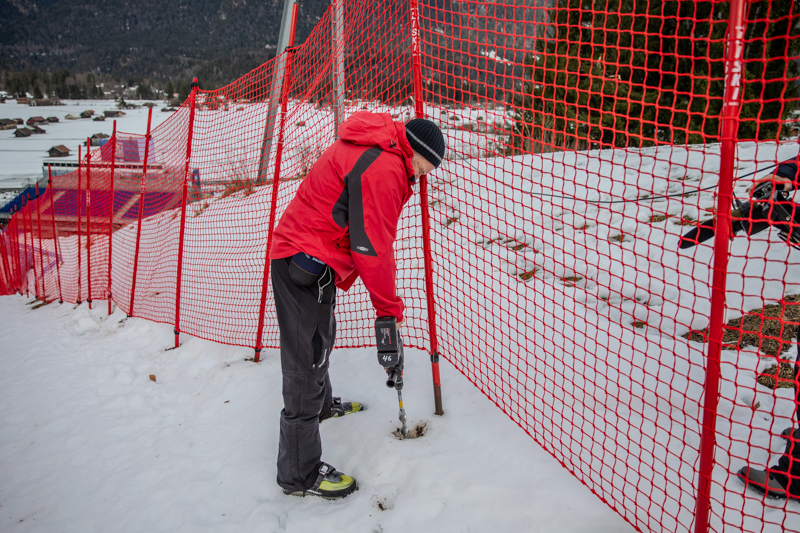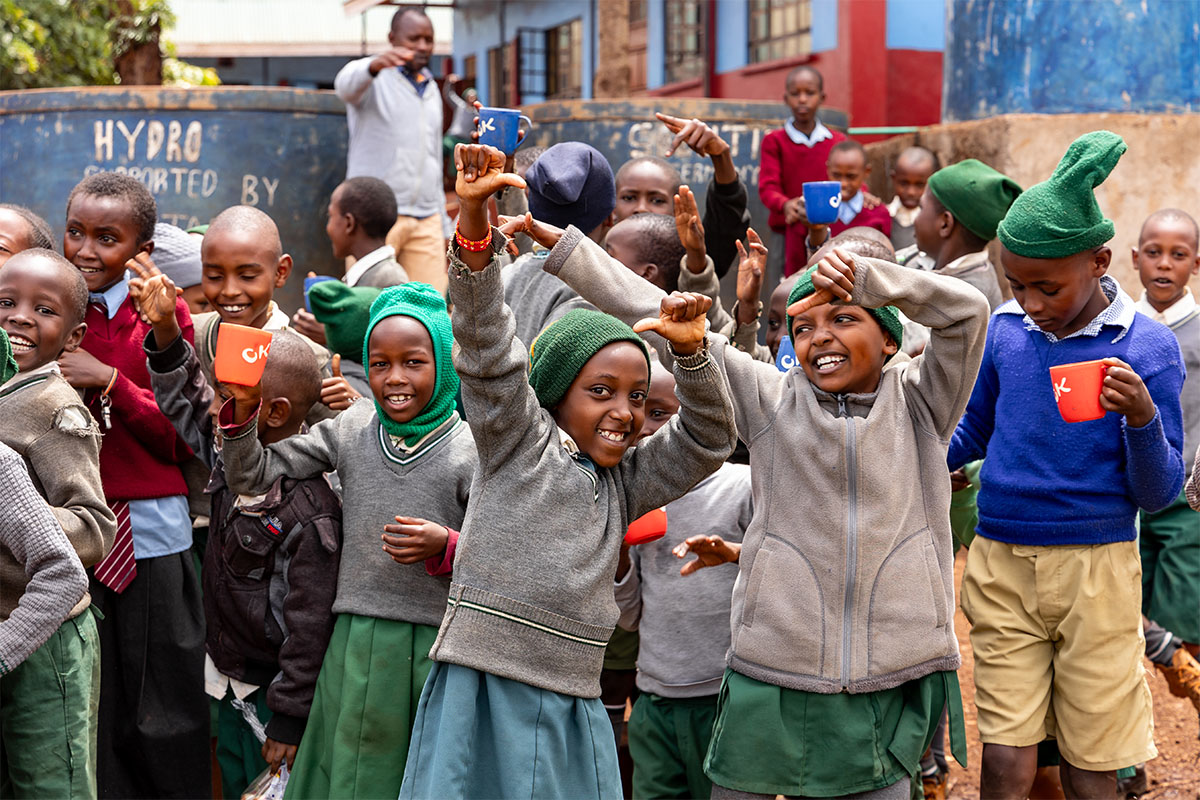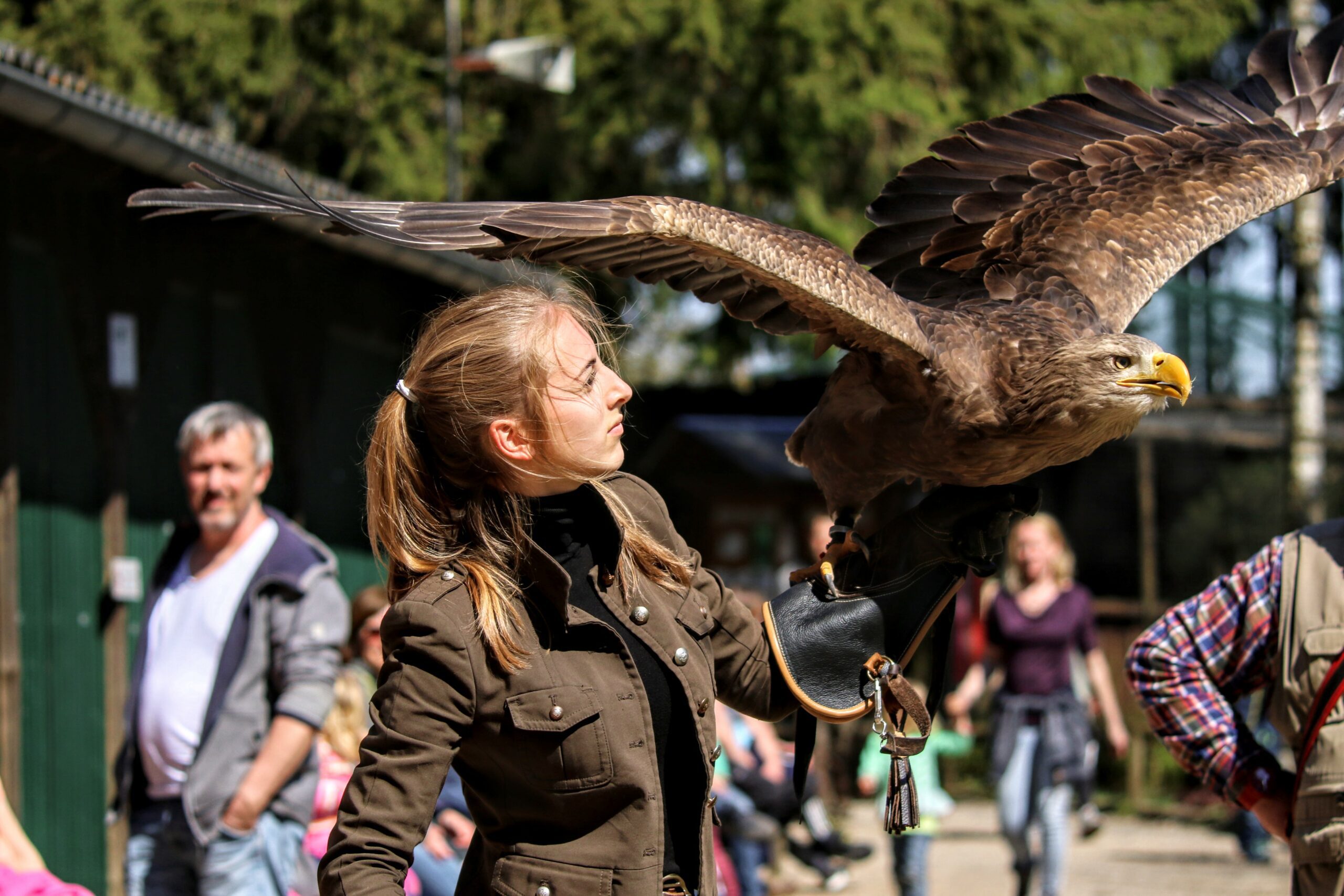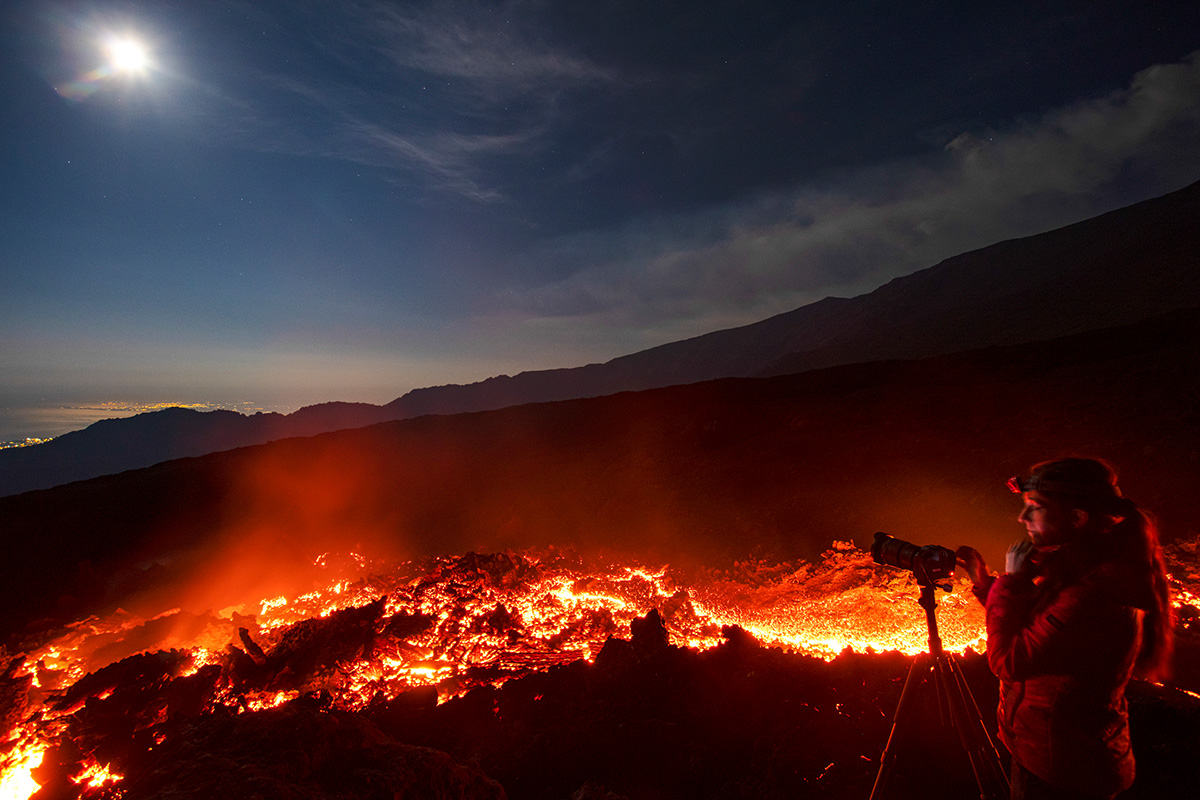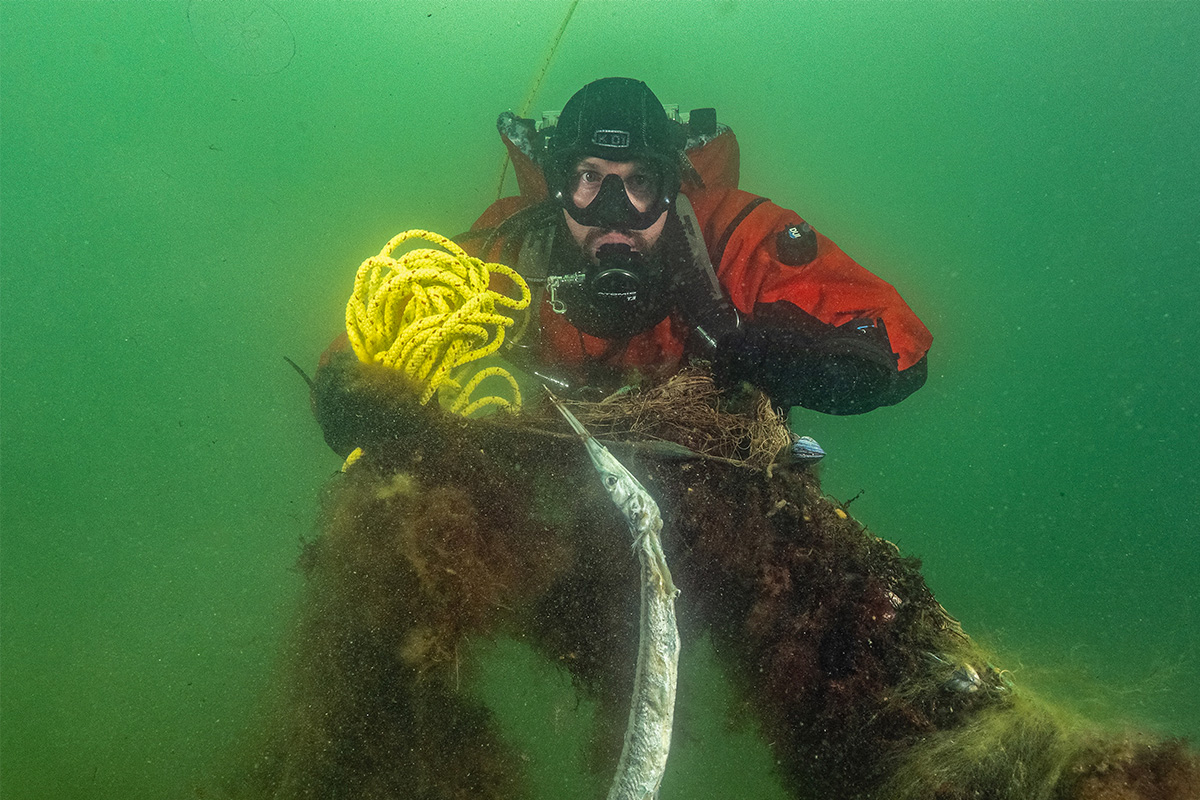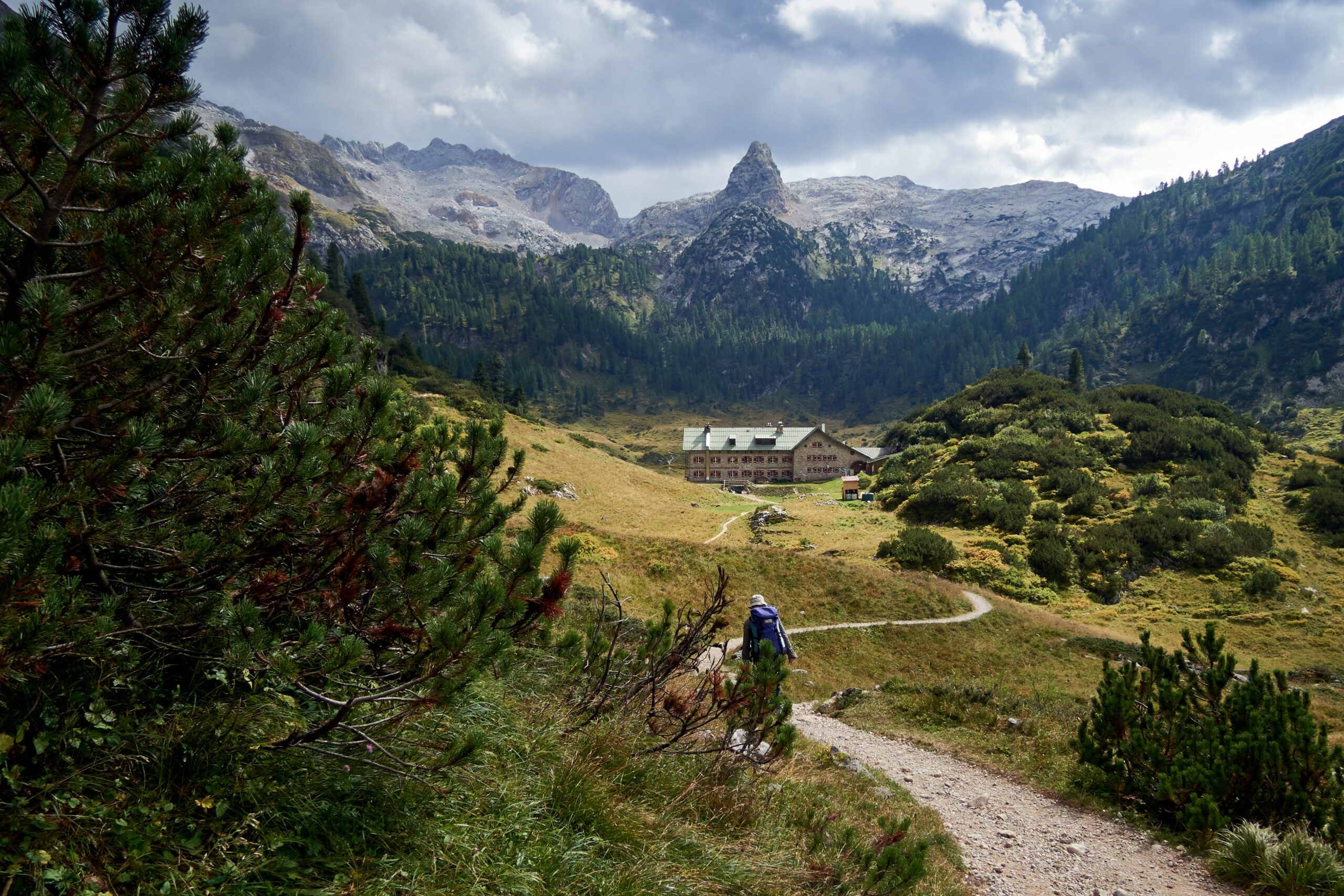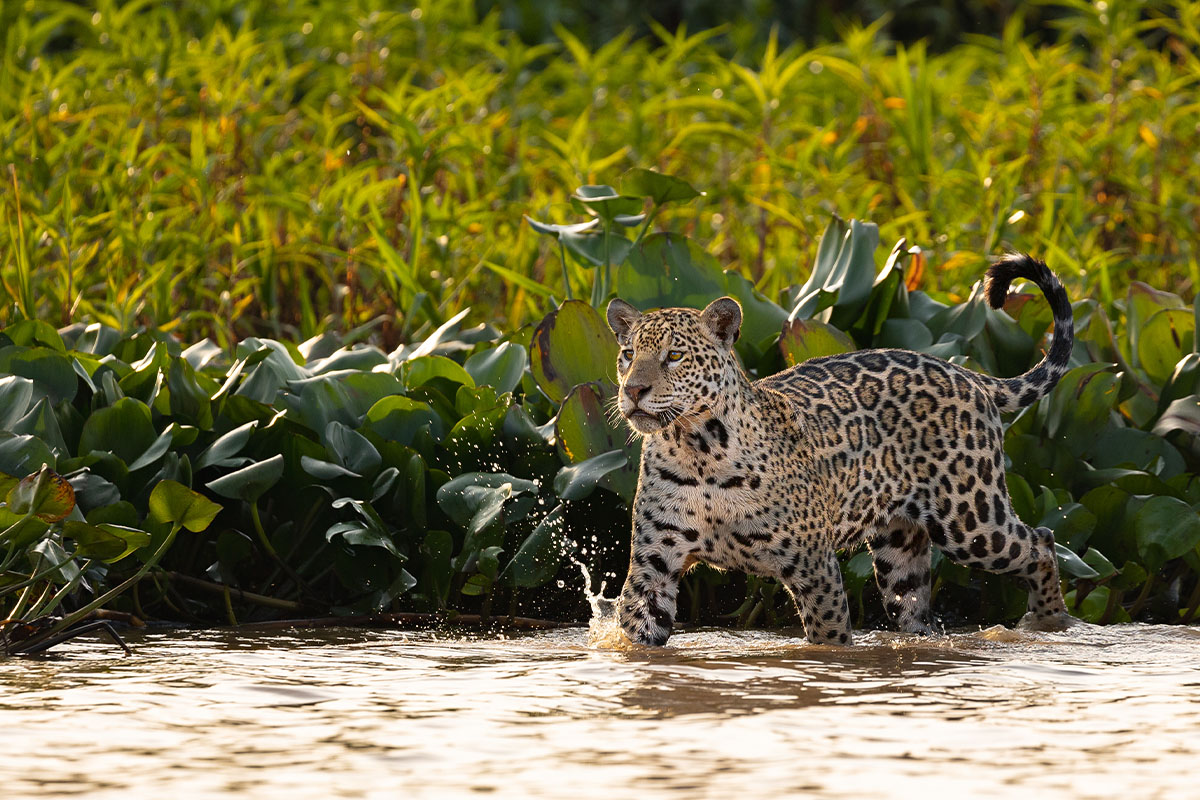“Surely, you can’t fail to notice a 450-kilogram bear approaching! Well, think again,” says Andreas Hütten, leaving a dramatic pause between the two sentences. The animal photographer is telling us the story of his second night at his open-air wilderness hideaway, “Hyde.” His most spectacular photo shoot to date led him to the far north of Europe, where he hunted bears armed only with a telephoto lens and a full-frame digital SLR. It was his second attempt in a year. In the spring, he had camped out for days in Slovenia, patiently hoping to snap a bear or two, but to no avail.
“Suddenly, I heard this snoring noise.” It was so close, he briefly suspected that another photographer had snuck into his shelter at night. “I glanced through the narrow viewfinder – just to check – and there was this giant just lying there, so close to the hideaway that the telephoto lens couldn’t even capture it fully,” recalls Andreas Hütten. Clearly, his efforts were bearing fruit. Northern Finland, September 2022.
Andreas Hütten travels from Amsterdam to Helsinki and onwards to Oulu, Finland’s fifth largest city and the northernmost city of the European Union. From here, he heads northeast, traveling kilometer upon kilometer in a straight line. The base camp is a rustic house surrounded by endless stretches of boreal forest. It’s around 60 kilometers to the nearest supermarket. Less than half that distance away: The Russian border. “This is one of the best places in all of Finland to spot and photograph brown bears and, with a bit of luck, wolverines in their natural habitat,” explains the nature photographer. He specializes in shots of native birds, mammals and plants.
While daytime temperatures hover around a pleasant six to seven degrees Celsius, nights are freezing at around five degrees below zero. Andreas Hütten spends six nights in his hideaway, all alone except for the bears, which show up every evening. “They usually come out ataround nine o’clock, during the long dusk. They’re always on time,” the photographer says with a twinkle in his eye. On the very first day, he spots a female bear with her offspring, stomping clumsily through the tall grass. Night two: A male poking out from behind a small tree as if to stay concealed behind its thin trunk.
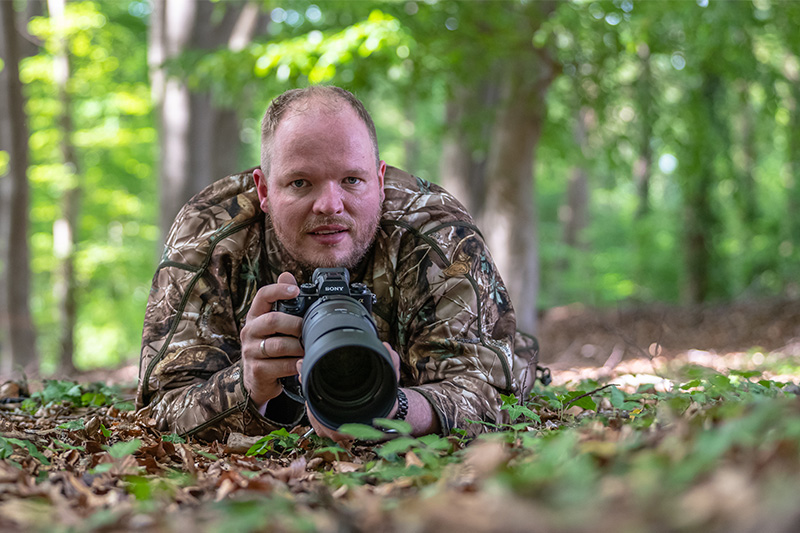
“The big bear came swimming across the lake on the third day. Against the light of the slowly setting sun, he shook the water out of his coat.” These are the moments that make a nature photographer’s heart beat faster. Hütten knows: “September is the perfect time for an ursine photo shoot, as this is the time when the brown giants put on fat to prepare for hibernation.” On their quest for food, they walked straight in front of his lens. His spoils: Brilliant pictures for the upcoming edition of his calendar.
CAMERA EQUIPMENT TIPS
Andreas Hütten only takes the bare necessities on his tours. Two digital full-frame cameras – a Canon R6 and a Sony Alpha 7r IV (63mp) – three lenses, and a 1.4x teleconverter.
His favorite lens is the Tamron 150-500mm Telezoom; another bright Canon tele (2.8/300 mm L) and the new Tamron standard zoom 35-150mm with a starting aperture of F/2 complete his gear.
